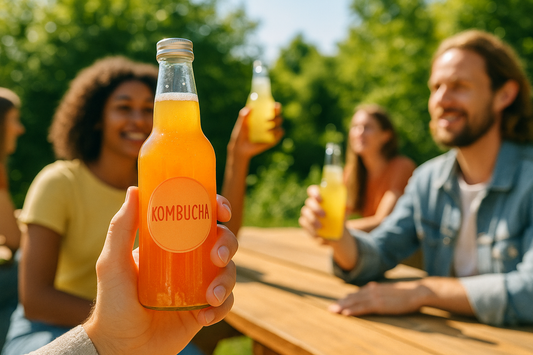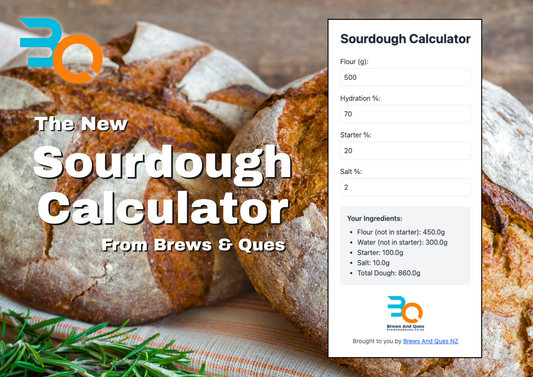Introduction
Homebrewing is a hobby that combines creativity, science, and a passion for beer. Over the years, many home brewers have transitioned from bottling to kegging their beer, drawn by the convenience, efficiency, and quality improvements that kegging can offer. Kegging not only saves time compared to the labor-intensive bottling process, but it also provides greater control over carbonation levels and allows for easier storage and dispensing of beer. This article will guide you through everything you need to know about homebrew kegging, from setting up your system to troubleshooting common issues.
Understanding Kegging Equipment
Types of Kegs
The heart of any kegging system is the keg itself. The most popular types among homebrewers are Cornelius (or Corny) kegs and Sankey kegs. Cornelius kegs, originally used for soda, are preferred for their ease of use and maintenance. They typically come in 9.5 - 18 litre sizes, making them ideal for homebrewers. Sankey kegs are more common in commercial settings but can be used for homebrewing as well.

Essential Equipment
In addition to kegs, several pieces of equipment are essential for a home kegging setup:
-
CO2 Tanks: Carbon dioxide is used to pressurise the keg and dispense beer. Tanks come in various sizes and can be refilled at local homebrew shops or gas suppliers.
-
Regulators: A regulator controls the pressure of CO2 entering the keg. It's crucial for maintaining the right carbonation level and ensuring smooth dispensing.
-
Kegerators: A kegerator is a refrigerator designed to store and dispense kegs. While not strictly necessary, it's a convenient option for those who keg frequently.
Optional Accessories
Several accessories can enhance your kegging experience:
-
Keg Cleaners: Keeping your kegs clean is essential for the quality of your beer. Keg cleaners can simplify this task.
-
Beer Lines, Taps, and Couplers: Quality lines and taps ensure a smooth flow of beer, while couplers are necessary to connect Sankey kegs to your system.
Setting Up Your Home Kegging System
Step-by-Step Guide to Setup
- Assembling the Equipment: Start by connecting your CO2 tank to the regulator, then attach the gas line from the regulator to the keg's gas-in post.
- Sanitization: Before use, sanitize the keg, lines, and connectors to prevent contamination.
- Connecting the Keg: Attach the beer line to the keg's liquid-out post. Ensure all connections are secure to prevent leaks.
- Pressure Settings: Adjust the regulator to the desired pressure, typically between 10-12 PSI for most ales.
- Chilling the Keg: Store the keg in a cool place, ideally in a kegerator, to reach the desired serving temperature.

Maintenance and Cleaning
Regular maintenance is crucial for the longevity of your equipment and the quality of your beer. This includes cleaning the keg, lines, and taps after each use and checking for any wear and tear.
Safety Considerations
Handling CO2 tanks requires caution. Store the tanks upright, and be aware of the high pressure inside them. Always handle with care and follow safety guidelines.
Carbonation Techniques
Understanding Carbonation Levels
Different beer styles require different levels of carbonation. Ales typically have lower carbonation, while lagers and certain Belgian styles might require higher levels.
Methods of Carbonating Beer in a Keg
- Natural Carbonation: Similar to bottling, sugar is added to the keg, and the beer is allowed to carbonate naturally over time.
- Forced Carbonation: CO2 is directly introduced into the chilled beer under pressure, a quicker method that gives more control over the carbonation level.
Adjusting and Measuring Carbonation
Use a carbonation chart to determine the right pressure settings for your desired carbonation level. Regularly taste your beer and adjust the pressure as needed.
Troubleshooting Common Kegging Issues
Leaks, Foaming, and Flat Beer
Common issues include CO2 leaks, excessive foaming, or flat beer. These can often be resolved by checking for loose connections, adjusting serving pressure, or ensuring the beer is properly carbonated and chilled.
Diagnosing and Resolving Issues
Regular inspections of your system can prevent many problems. If issues arise, methodically check each component of your system from the CO2 tank to the tap.
Kegging vs. Bottling: A Comparative Analysis
Pros and Cons
Kegging offers speed and convenience, better carbonation control, and easier storage. Bottling, on the other hand, is more portable and requires less initial investment.
Cost, Time, and Quality
Kegging requires a higher upfront cost but saves time and effort in the long run. It can also result in a higher quality product due to reduced oxygen exposure.

Advanced Kegging Techniques
Counter-Pressure Filling and Keg Conditioning
For those looking to expand their kegging skills, techniques like counter-pressure filling to bottle from a keg or using kegs for secondary fermentation can be explored.
Kegging Lagers and Specialty Beers
Lagers and specialty beers may require different handling, such as longer conditioning times or specific carbonation levels.
Community and Resources
Joining Homebrew Communities
Joining homebrew communities, both online and in-person, can provide invaluable support, advice, and inspiration.
Recommended Resources
Books, websites, and forums dedicated to homebrewing are great resources. Local homebrew clubs offer opportunities to share knowledge and participate in competitions.
Conclusion
Homebrew kegging is an enriching journey that combines the science of brewing with the art of serving the perfect pint. Whether you're a seasoned brewer or just starting, the world of kegging opens up a realm of possibilities. With the right equipment, knowledge, and community support, you can take your homebrewing to new heights, enjoying the process as much as the delicious beer you create.
For more information about Kegging or Kegerators, be sure to check out our Kegging Equipment page, give us a call on 0800 374 663 or drop into the store at 16a Scott Street, Blenheim for a first hand look at our Kegerators and Kegging Equipment... we look forward to seeing you!








